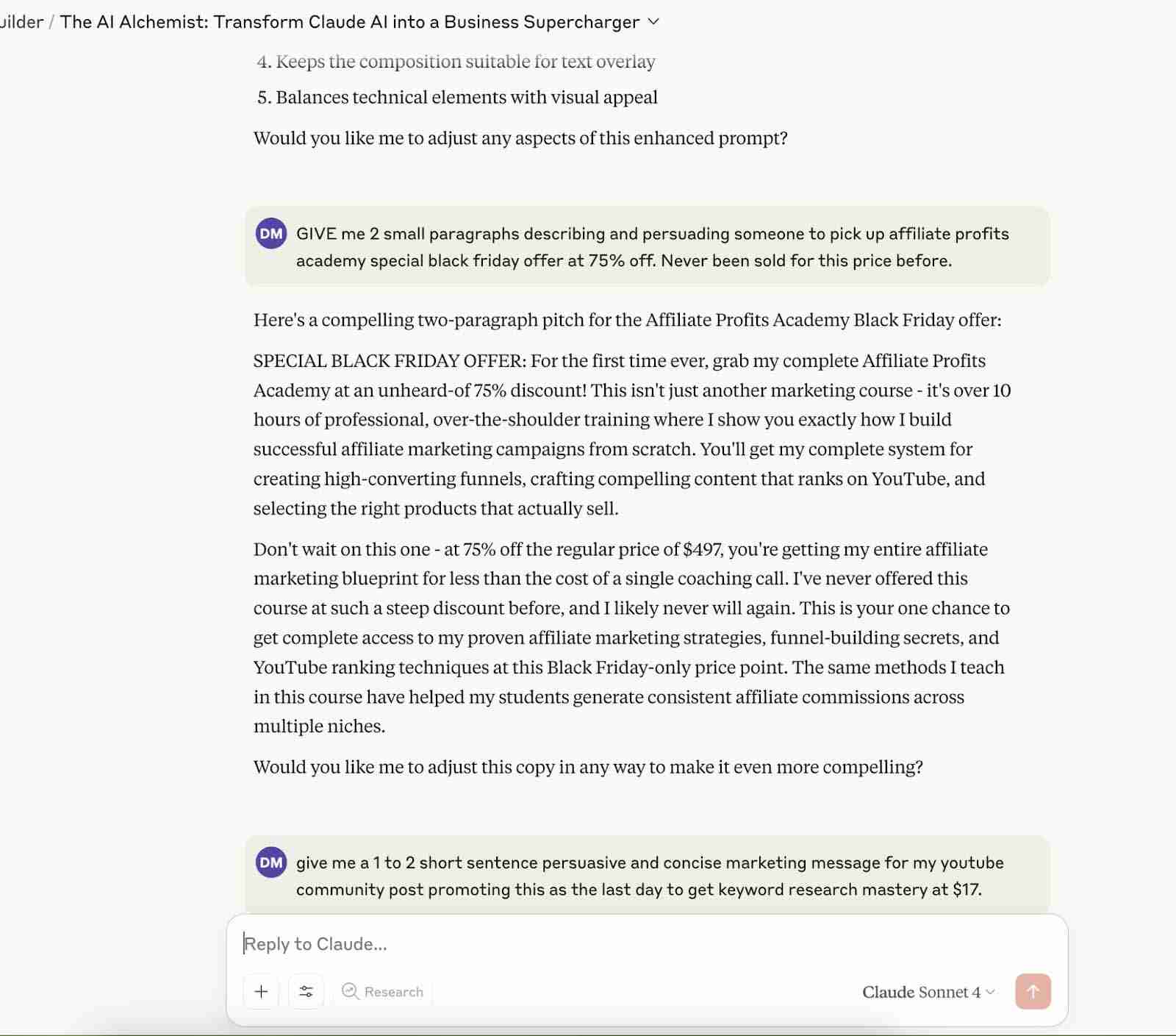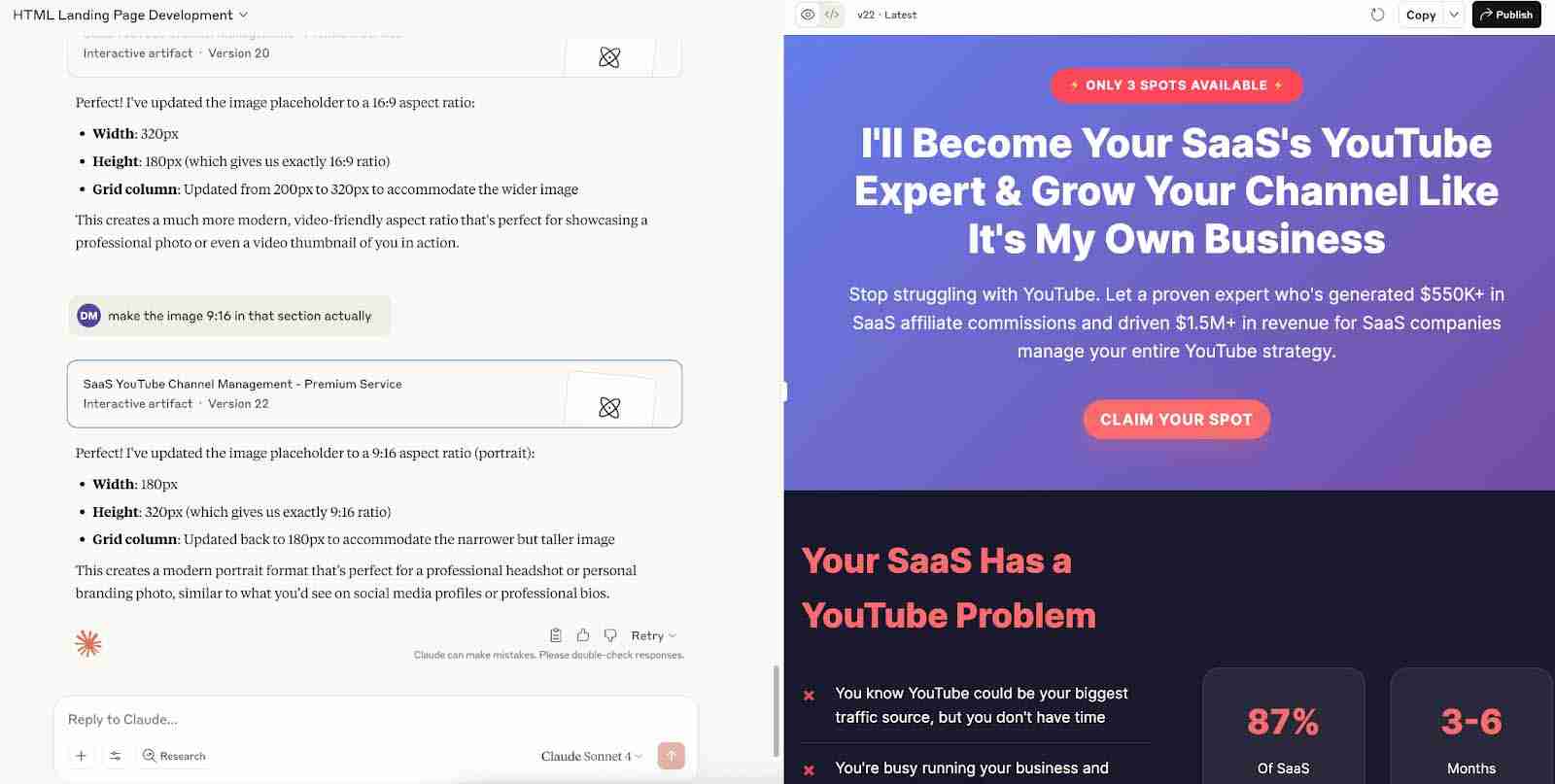What Is Claude AI, and How Does It Stack Up to ChatGPT?
Claude AI is a family of advanced large language models by Anthropic, serving as a conversational AI for writing, coding, summarizing, and image analysis. Read my hands-on take to see how Claude AI performs in real use.

The world of AI chatbots has been buzzing, and while ChatGPT often grabs the headlines, another major player is turning heads: Claude AI. I've received a lot of questions about it, and it's time to give you the full breakdown. We'll cover what it is, its key features, and how it compares to the competition.
What is Claude AI?
Claude AI is a family of large language models (LLMs) developed by Anthropic, an American AI startup and public-benefit corporation. The company was founded by former members of OpenAI and has a strong focus on creating safe and reliable AI systems.
The AI has gone through several versions. It started with Claude 1 and then improved with Claude 2, each version becoming more capable. The big shift came with the Claude 3 model family, which introduced different tiers: Haiku (the fastest), Sonnet (the balanced model), and Opus (the most powerful). Now, we have the latest versions, Claude 4 Sonnet and Claude 4.1 Opus, which continue to push the boundaries of what these models can do. The rest of this article will focus on these current, powerful versions.
While I use several LLM AI chatbots like ChatGPT and Google Gemini, Claude has been my most used and favorite. It's so simple to use and create projects to speed up your daily business tasks, and Claude writes in the most human way of any AI writer out there. I absolutely recommend and love this tool.
How Does Claude AI Work?
At its core, Claude AI operates as a large language model. It's been trained on a massive dataset of text and code. What makes Claude different is its development process, which is guided by a method Anthropic calls "Constitutional AI."
Think of it like this: instead of just being trained on raw data, Claude is also trained based on a "constitution." This is a set of principles designed to make its responses helpful, honest, and harmless. This safety-first approach means Claude is built from the ground up to avoid generating harmful, unethical, or dangerous content, which is a key differentiator from some other models.
What is Claude AI Good For?
Claude AI is a versatile tool used for a wide array of tasks by professionals and casual users alike. Its strength in handling large amounts of text makes it particularly useful for detailed and complex work.
Here's a more detailed breakdown:
Writing and content creation
Claude excels at generating natural, human-sounding text. You can use it to draft emails, write blog posts, create marketing copy, or even help with creative writing projects like scripts and stories. Its ability to maintain a consistent tone and style makes it a powerful assistant for any content creator.

Coding and development
For developers, Claude can be a valuable partner. It can write code snippets in various programming languages, help debug existing code by identifying errors, and explain complex programming concepts. You can paste a function that isn't working, and Claude can help you spot the problem.

Research and information gathering
Claude's ability to process large amounts of information is one of its standout features. You can upload long research papers, dense reports, or articles and ask Claude to summarize the key points, extract specific data, or answer questions based on the text.
Analysis and data processing
If you have large blocks of unstructured text data, Claude can help make sense of it. For example, a business could upload thousands of customer reviews and ask Claude to categorize them by sentiment (positive, negative, neutral) or identify recurring themes and issues.
Customer service
Businesses can use Claude to power intelligent chatbots for their websites. These bots can provide instant answers to common customer questions about products, services, shipping, or returns, freeing up human agents to handle more complex issues.
What are the Key Features of Claude AI?
Claude stands out due to several core features that define its user experience and capabilities. These elements work together to create a powerful and safe AI assistant.
Here's a closer look at what makes it tick:
Natural language understanding
Claude is very good at understanding the nuances of human language. It can grasp context, slang, and subtle instructions, which leads to more accurate and relevant responses.
Human-like conversations
The output from Claude is often described as being more natural and less robotic than some of its competitors. This makes it my go-to choice for tasks where a human touch is important, like writing emails or creating engaging content.
Summarization, writing, analysis
These are Claude's bread and butter. It can take a huge amount of information and distill it into a concise summary. It can generate high-quality written content in different styles and tones and analyze text to pull out key information.
Long context window
This is a major advantage. A "context window" is the amount of information the AI can hold in its memory during a conversation. Claude has a context window of up to 200,000 tokens, which is equivalent to about 150,000 words or over 500 pages of text. This means you can upload an entire book or a lengthy business report and have a conversation about it without the AI losing track.
Safety-first alignment approach
Thanks to its "Constitutional AI" training, Claude has a built-in focus on safety. It is designed to decline inappropriate or harmful requests. This makes it a more reliable and predictable tool, especially for businesses concerned about brand safety.
How Does Claude AI Compare with ChatGPT?
This is the big question for many people. In short, both are incredibly powerful, but they have different strengths. Claude often produces more nuanced and natural-sounding text, making it a favorite for writers. Its massive context window is a clear advantage for anyone working with long documents.
ChatGPT, on the other hand, has a more extensive ecosystem of plugins and integrations, giving it great versatility. It's often very fast for quick queries and its ability to browse the web in real-time is a strong feature.
For a deeper look at how these two AI giants perform head-to-head, be sure to check out my detailed guide on Claude vs. ChatGPT.
Advantages of Claude AI
When choosing an AI chatbot, Claude presents several distinct advantages that might make it the better choice for certain users and tasks.
Here are some of the main benefits:
Long context window
I have to mention it again because it's that important. The ability to process hundreds of pages of text at once is a game-changer for deep research, legal document review, or analyzing a complete codebase. You don't have to break your documents into small chunks, which saves a ton of time.
Focus on safety
The Constitutional AI framework makes Claude a more predictable and responsible AI assistant. For businesses, this means a lower risk of the AI generating off-brand or problematic content. It's built to be helpful and harmless.
Clear, natural response
The quality of Claude's writing is a huge plus. It avoids robotic phrasing and produces text that often feels like it was written by a human. This is why I personally use it for a lot of my own content creation tasks.
Disadvantages of Claude AI
Despite its strengths, Claude has some limitations that potential users should be aware of. No tool is perfect, and it's important to know where it might fall short.
Here's a look at some of the downsides:
Availability
While Claude's availability has expanded significantly, it's still not available in as many countries as ChatGPT. You'll need to check if it's supported in your region before you can sign up.
Limitations in creative generation
Claude does not have native image generation capabilities like ChatGPT does with DALL-E 3. If your work involves creating visuals, you'll need to use a different tool. Its creativity is focused entirely on text.
Fewer plugins and integrations
ChatGPT has a clear lead with its massive library of third-party plugins and a more mature API. This means ChatGPT can connect to and work with a wider range of other software and services, extending its functionality in ways Claude currently cannot match.
How Much Does Claude AI Cost?
Anthropic offers a few different pricing tiers for Claude, making it accessible for both casual users and professional teams.
Here is a simple breakdown of the current plans:
| Plan | Price | Key Features |
|---|---|---|
| Claude | Free | Access to Claude Sonnet, limited usage that resets every few hours. |
| Claude Pro | $20/month + tax | 5x more usage than the free tier, priority access during high-traffic periods, early access to new features, and access to the Opus model. |
| Claude Team | $30/user/month (min 5 users) | Higher usage limits, 200K context window, admin tools for user management, and everything in Pro. |
How to Access and Use Claude AI
Getting started with Claude is simple. Just head over to the official website, claude.ai, and sign up using an email account.
The interface is clean and user-friendly. You have a main chat window where you can type your prompts. A key feature I really like is "Projects," which lets you create separate conversational threads for different tasks to keep your work organized. To upload a document, you simply click the paperclip icon and select the file from your computer.
Summary
Claude AI, developed by Anthropic, is a top-tier AI assistant that stands out with its focus on safety and its exceptional ability to handle long documents. Its "Constitutional AI" framework ensures more reliable and harmless responses, making it a solid choice for business applications. While it lacks the extensive integrations of ChatGPT, its natural, human-like writing style and massive context window make it a powerful tool for writers, researchers, and developers. For me, its high-quality output makes it an indispensable part of my workflow.
FAQs
Here are some quick answers to common questions about Claude AI.
Who owns Claude AI?
Claude AI is owned and developed by Anthropic, an AI safety and research company founded by former senior members of OpenAI.
What can Claude AI Do?
Claude AI can perform a wide range of tasks, including writing content, summarizing long documents, answering questions, writing and debugging code, and analyzing text data.
Is Claude AI better than ChatGPT?
It depends on the task. Claude is often better for nuanced writing and analyzing long documents due to its larger context window and more natural output. ChatGPT excels with its vast plugin ecosystem and is sometimes quicker for general knowledge questions.
Can Claude AI access the internet?
Yes, the latest versions of Claude have some web-Browse capabilities, allowing them to search for current information to inform their responses.
Is Claude AI open source?
No, Claude AI is a proprietary model. It is developed and owned exclusively by Anthropic and is not available as open-source software.


